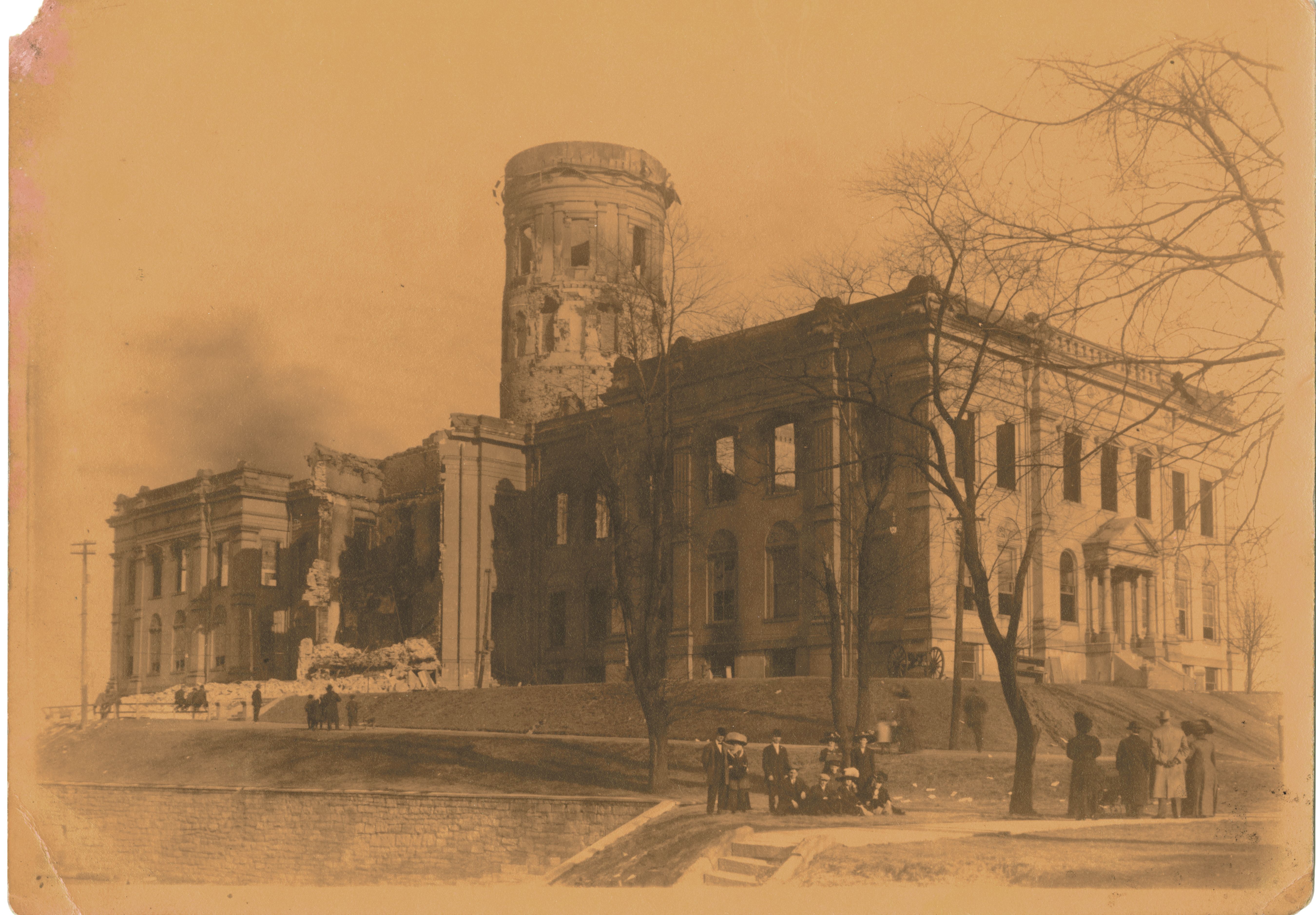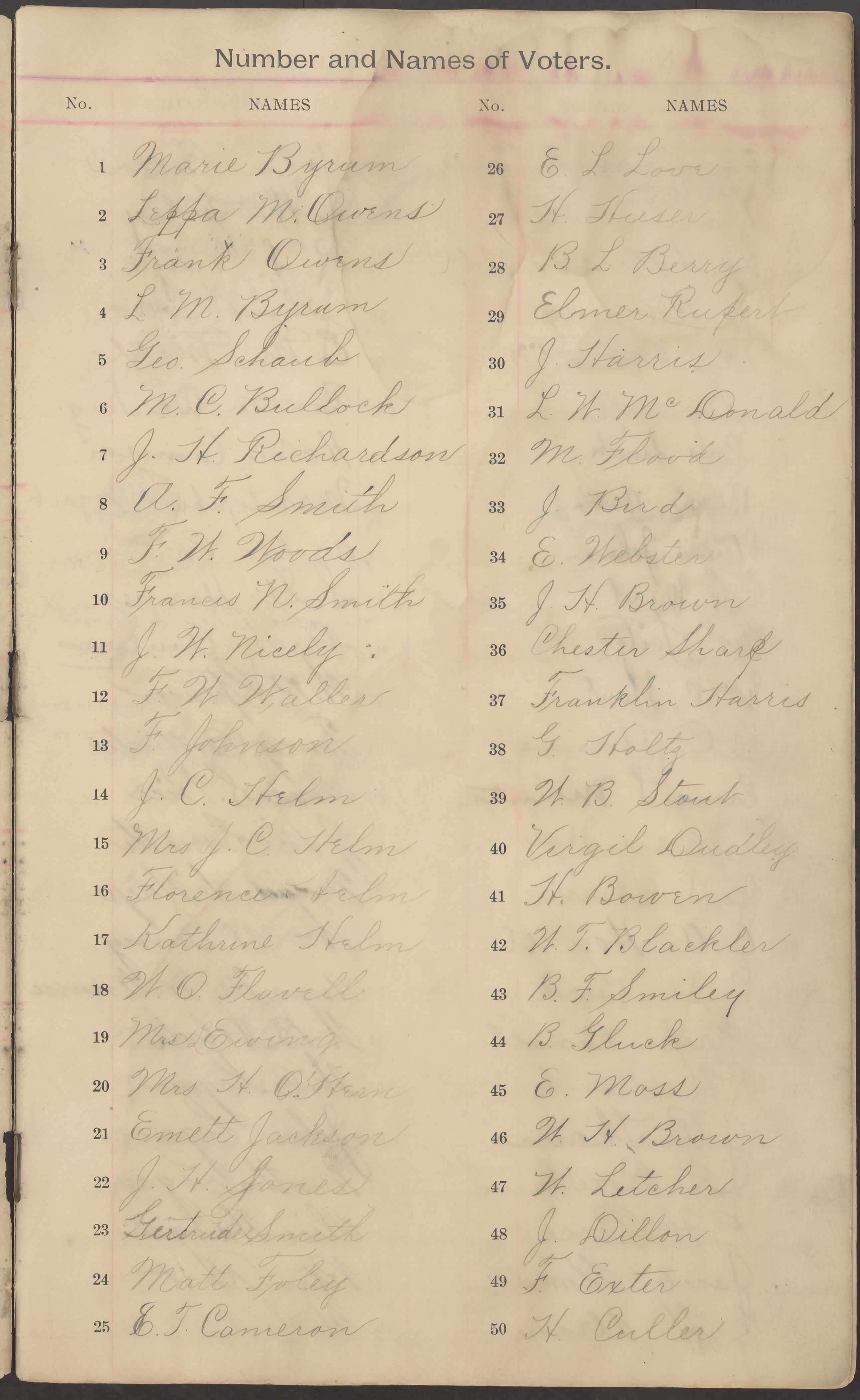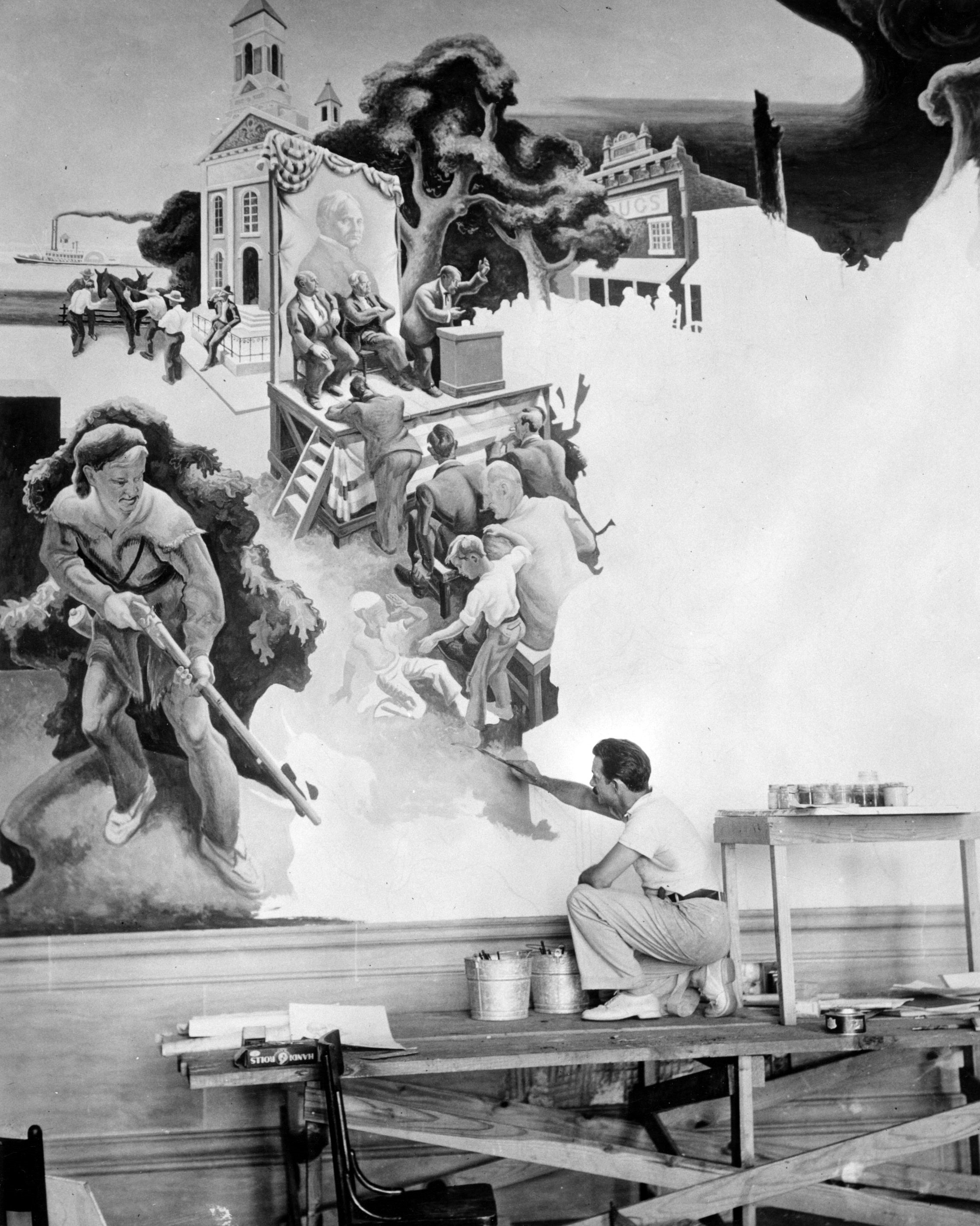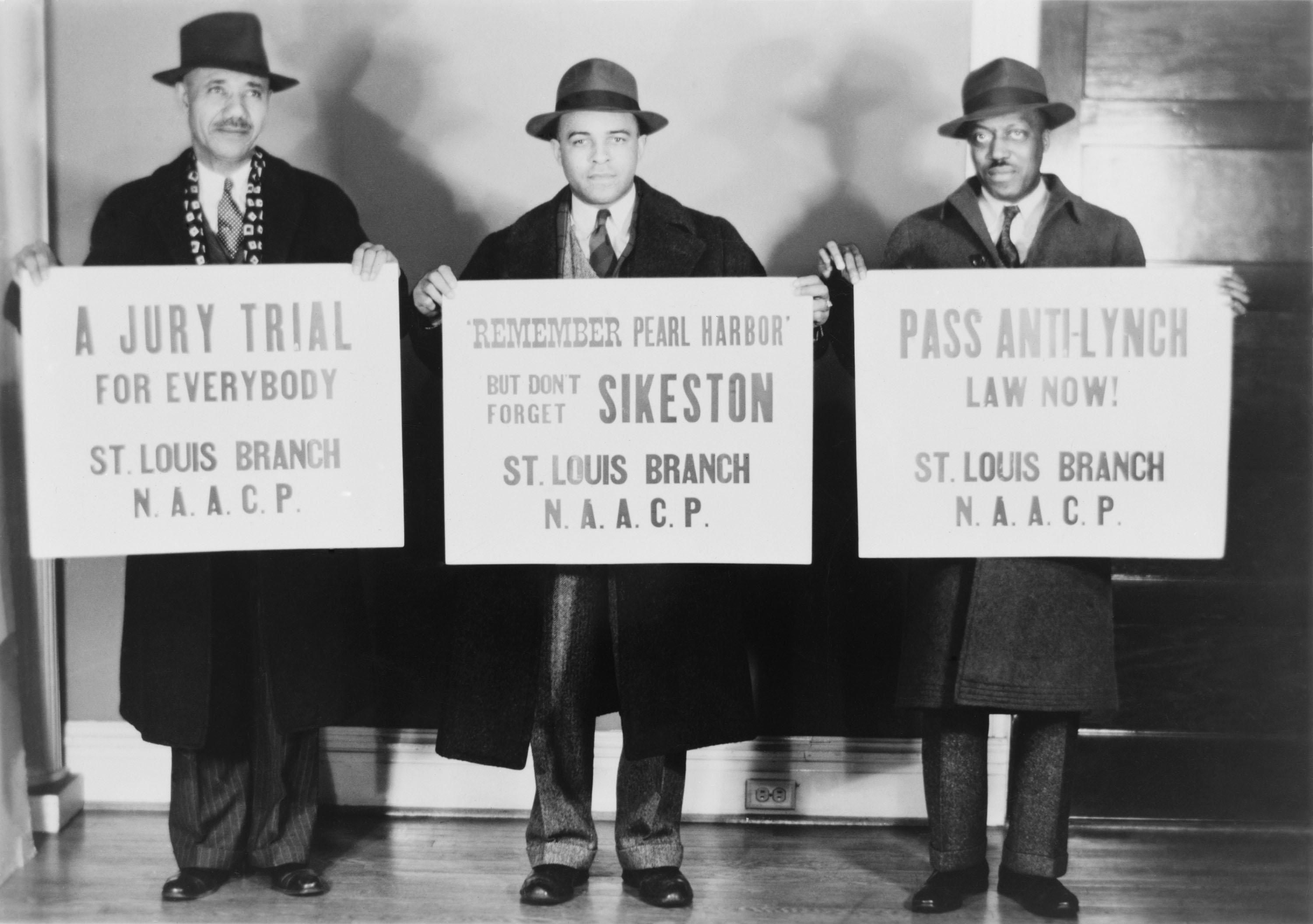| 1901 |
The first State Fair was held at Sedalia from September 9-14, 1901. |
| 1901 |
The Monsanto Company was founded in St. Louis on November 29, 1901. Originally a chemical company, the company would become a major producer of genetically engineered crops and was of the leading agricultural biotechnology companies. |
| 1904 |
The St. Louis World’s Fair, formally called the Louisiana Purchase Exposition, opened on April 30, 1904. The Fair also hosted the 1904 Summer Olympics, the first Olympic games held in the United States. |
| 1905 |
The Fourth District Normal School (now Missouri State University) in Springfield and the Fifth District Normal School (now Northwest Missouri State University) in Maryville were established on March 17, 1905 by the General Assembly. |
| 1907 |
The primary election law (“An act to provide for party nominations by direct vote”) was adopted in Missouri on March 18, 1907. This law shifted primary elections in Missouri from caucuses run by each political party to public elections paid for by the state. |
| 1907 |
A project aimed to convert swampland in Missouri's boot heel into productive, habitable agricultural land was incorporated on November 30, 1907. Constructed between 1914 and 1928, the Little River Drainage District has almost 1,000 miles of ditches and 300 miles of levees, draining 1.2 million acres of land. It was one of the largest independent public works projects in the United States. |
| 1910 |
St. Louis City citizens elected Charles Turpin constable of St. Louis’ Fourth District on November 8, 1910. Turpin became the first Black candidate elected to public office in Missouri. |
| 1911 |
The Missouri State Capitol was destroyed by fire when lightning struck the dome on February 5, 1911. The new Capitol building was completed in 1917 and officially dedicated on October 6, 1924. |

RG395, Missouri State Capitol Commission, Capitol Ruins (1911)
|
| 1911 |
Missouri was the 26th state to ratify the Sixteenth Amendment to the U.S. Constitution establishing a federal income tax on March 16, 1911. The amendment went into effect February 3, 1913. |
| 1912 |
On April 1, 1912, the U.S. Supreme Court decided Standard Oil Company of Indiana v. Missouri reaffirming the Missouri Supreme Court’s decision regarding antitrust laws. The case helped define due process and equal protection in anti-trust law in Missouri determining a state could have more restrictive regulations as long as it was not an undue hindrance to the citizens. This was one in a series of cases at the time breaking up anti-competitive oil industry practices. |
| 1913 |
Missouri was the 30th state to ratify the Seventeenth Amendment to the U.S. Constitution authorizing the direct election of U.S. Senators (previously United States Senators were elected by each state’s General Assembly) on March 7, 1913. The amendment went into effect on May 31, 1913. |
| 1913 |
The Missouri State Flag, designed by Mary Watkins Oliver, was adopted by the signing of House Bill 329 on March 22, 1913. |
| 1916 |
In their first use of St. Louis’s new city charter's initiative petition process, voters overwhelmingly passed a city-wide segregation ordinance on February 29, 1916 stating no one could move to a block of residences where 75% of people were another race. The U.S. Supreme Court Case decision in Buchanan v. Warley based in Louisville, Kentucky made ordinances like this unconstitutional the following year, but other racially restrictive covenants continued. |
| 1917 |
The United States joined the Great War (World War I) on April 7, 1917. Over 30,000 Missouri soldiers primarily served in the 35th and 89th Army Infantry Divisions and over 14,000 Missourians enlisted in the Navy. |
| 1919 |
Missouri was the 37th state to ratify the Eighteenth Amendment to the U.S. Constitution prohibiting the manufacture, distribution, and sale of intoxicating liquors on January 16, 1919, (only 36 states were needed for ratification). Prohibition would go in effect on January 17, 1920 deeply affecting Missouri’s beer and wine industries requiring Anheuser-Busch, local wineries, and other companies to create alternate products. |
| 1919 |
Gov. Frederick D. Gardner signed Senate Bill 1 into law on April 5, 1919 granting presidential suffrage to Missouri women. |
| 1919 |
The Missouri General Assembly established the Missouri Negro Industrial Commission to improve the conditions of Black Missourians on June 3, 1919. The Commission provided recommendations for improvement of Black life in Missouri addressing education, rural life, migration from southern states, anti-lynching efforts, and employment issues and existed until 1928 when the legislation authorizing it expired. |
| 1919 |
Missouri became the 11th state to ratify the Nineteenth Amendment to the U.S. Constitution granting full suffrage to women on July 3, 1919. The amendment went into effect on August 26, 1920. |
| 1920 |
Marie Byrum became the first woman to vote in Missouri history on August 31, 1920 during a special election for Hannibal City Council. Harriett Hampton, who voted later that day, was probably the first Black woman to vote in Missouri. |

MS005, Marie Byrum Poll Book
|
| 1920 |
Elected as a representative from St. Louis on November 2, 1920, Walthall Moore became the first Black person to serve in the Missouri General Assembly. |
| 1921 |
Missouri’s first radio station, WEW in St. Louis, began broadcasting twice-daily weather reports for Missouri and Illinois on April 26, 1921. |
| 1921 |
Mayme Ousley was sworn in as the first female mayor in the state of Missouri on May 2, 1921 after a local election in St. James. |
| 1921 |
Creating the first bipartisan State Highway Commission, the Centennial Road Law was signed on August 4, 1921. The measure empowered the commission to locate, design, construct and maintain a statewide public highway system, the basis of which is still used today. |
| 1921 |
On November 1, 1921, the groundbreaking for the Liberty Memorial in Kansas City began. Attending were the five Allied Commanders of World War I: Lieutenant General Baron Jacques of Belgium, Admiral of the Fleet Lord Beatty of Great Britain, General Armando Diaz of Italy, Marshal Ferdinand Foch of France, and General of the Armies John Pershing of the United States. It was the first time these leaders were all in one place. |
| 1922 |
The fifth Missouri Constitutional Convention began meeting on May 15, 1922, however instead of a new constitution, 21 amendments were proposed. Because voters did not approve all of the amendments at the February 26, 1924 special election, none of the amendments were ratified. |
| 1922 |
Mellcene T. Smith (St. Louis) and Sarah Lucille Turner (Kansas City) became the first women elected to the Missouri General Assembly on November 7, 1922. |
| 1925 |
The Tri-State Tornado hit parts of Missouri, Illinois, and Indiana on March 18, 1925. Originating in southeastern Missouri, the tornado was the deadliest in United States history. |
| 1931 |
Missouri was the third state to complete and pave its portion of Route 66 highway on January 5, 1931. |
| 1931 |
Bagnell Dam was completed in April 1931 forming the Lake of the Ozarks, one of the largest artificial lakes in the world with approximately 1,400 miles of shoreline. |
| 1933 |
Missouri was the 36th state to ratify the Twentieth Amendment to the U.S. Constitution regarding the transition periods between presidents on January 23, 1933. Missouri was the last state needed to ratify the amendment and the amendment went into effect on October 15, 1933. |
| 1933 |
Missouri was the 20th state to ratify the Twenty-First Amendment to the U.S. Constitution repealing prohibition on August 29, 1933. The amendment went into effect on December 5, 1933. |
| 1936 |
Thomas Hart Benton’s mural A Social History of Missouri in the State Capitol’s House Lounge was completed on December 19, 1936. A visual timeline of the state of Missouri, the mural brought criticism as Benton did not shy away from controversial aspects of Missouri’s history. |

RG104, Commerce and Industrial Development, Thomas Hart Benton Painting A Social History of Missouri
|
| 1937 |
The first Missouri Conservation Commission was appointed on July 1, 1937. Established via initiative petition in November of the previous year, the “Missouri Model” funds conservation through a state sales tax. |
| 1938 |
The U.S. Supreme Court handed down its decision in the case Missouri ex rel. Gaines vs. Canada on December 12, 1938. The court struck a blow to Missouri’s "separate but equal" laws, stating that in the absence of an equal law school for Black students, Gaines should be admitted to the University of Missouri law school. Gaines disappeared shortly after this decision and did not attend. |
| 1940 |
The Missouri Nonpartisan Court Plan, also known as the Merit Plan, was a constitutional amendment approved by voters on November 5, 1940. Under the Plan, a non-partisan commission reviews candidates for judicial vacancies in the City of St. Louis, and in St. Louis, Jackson, Clay, Platte and Greene counties along with the state appellate and Supreme Courts. The commission sends the governor a list of three candidates considered the best qualified. The governor then has 60 days to select a candidate from the list and if a selection is not made, the commission makes the selection. At the next General Election, the public votes whether to retain the judge for 12 years and can be retained for multiple terms. |
| 1941 |
The decision in State ex rel. Bluford v. Canada was handed down in July 25, 1941 by the Missouri Supreme Court. Lucile Bluford, a Black student, tried to register for journalism classes at the graduate program at the University of Missouri and was prohibited due to her race. The Supreme Court decision stated the University had to admit her as there was not a comparable program in the state. In response, the school closed the graduate program stating there was not enough faculty to teach due to World War II. The Lincoln University School of Journalism was established shortly thereafter. |
| 1942 |
The lynching of Cleo Wright in Sikeston on January 12, 1942 initiated a federal investigation by the United States Department of Justice, the first time the Department intervened in a Civil Rights case. Although no indictments were made, the investigation set a precedent for federal intervention in civil rights cases. Wright was the last Black man lynched in Missouri. |

Courtesy of Library of Congress Visual Materials from the National Association for the Advancement of Colored People Records, copyright unknown, NAACP Protests Cleo Wright lynching
|
| 1945 |
Missouri’s fourth, and current, constitution went into effect on March 30, 1945. This constitution reformatted Missouri state government administrative structure, tax collection, and provisions relating to local government. |
| 1945 |
U.S. Vice President and former Missouri U.S. Senator from Independence, Harry S Truman became President upon the death of Franklin Delano Roosevelt on April 12, 1945. He was elected for a second term on November 2, 1948. |
| 1945 |
Japan signed documents of surrender ending World War II in the Pacific on the deck of the USS Missouri on September 2, 1945. Over 450,000 Missourians served in the Pacific and European Theaters as part of the Allied forces fighting the Axis Powers (Germany, Japan, and Italy). Germany and other Axis Powers had previously surrendered on May 7, 1945. |
| 1946 |
Winston Churchill, former Prime Minister of England, delivered his "Iron Curtain" speech at Westminster College in Fulton on March 5, 1946. |
| 1947 |
KSD, the first television station in Missouri, broadcast their first program in St. Louis on February 8, 1947. The broadcast consisted of news, interviews, and a sports show. There were only 4 television sets in the area and only 12 other television stations in the nation. |
| 1947 |
Missouri was the 17th state to ratify the Twenty-Second Amendment to the U.S. Constitution limiting to two the number of terms a president can serve on May 22, 1947. The amendment went into effect on February 27, 1951. |
| 1948 |
The U.S. Supreme Court handed down its decision in the Shelley vs Kraemer, a St. Louis housing segregation case, on May 3, 1948. J.D. and Ethel Shelley challenged restrictive covenants preventing the sale or lease of property to Black people. When the Missouri Supreme Court upheld the practice in 1945, the Shelleys appealed. The U.S. Supreme Court decided the 14th Amendment’s Equal Protection Clause prohibited such racial discrimination. The practice would not be fully outlawed until the Fair Housing Act in 1968. |